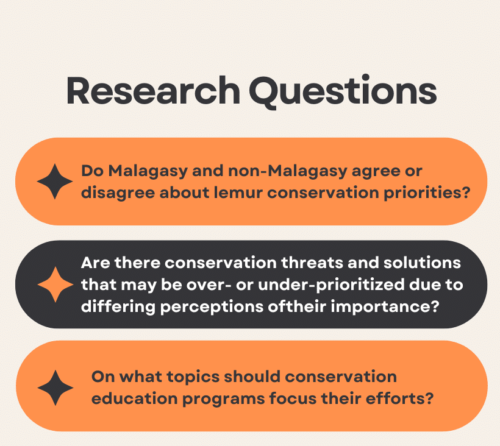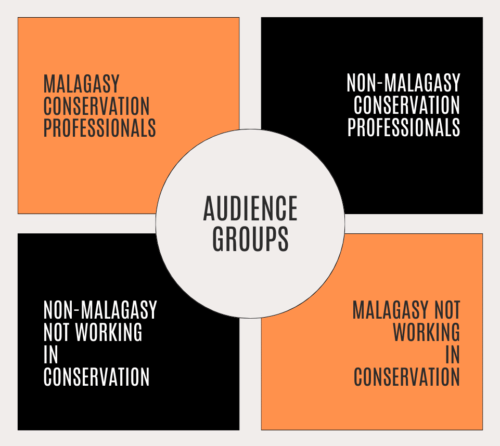In the Science Corner blog series, Ph.D. student Coral Chell reviews recent scientific papers and examines their importance for lemur conservation. In this post, she reviewed “Perceptions of Lemur Conservation among Malagasy and Non-Malagasy”, published in the 37th issue of Primate Conservation.
Collaboration is Key. But What If Those Involved Have Different Perspectives?
“Collaboration between Malagasy and non-Malagasy is evident throughout conservation in Madagascar. These collaborations can be impacted by differing perceptions, worldviews, value systems, and may result in competing or misunderstanding priorities.”
Collaborations between Malagasy and non-Malagasy are evident throughout science and conservation in Madagascar. Just look at AEECL or Planet Madagascar as examples of notable science and conservation organisations which have made giant leaps due to successful collaborations.
But, does everyone involved in these collaborations have the same views on priorities or what the main outcome should be? And, does this ever impact their actions?
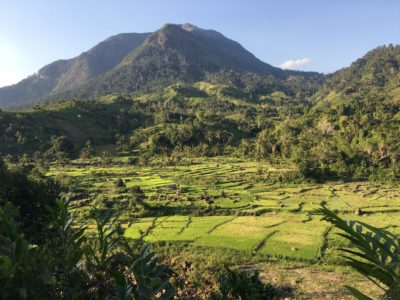
For example, non-Malagasy conservationists may value the protection of the forest to maintain biodiversity. In contrast, local Malagasy communities near the forest may prioritise forest protection for spiritual beliefs and resource use (Golden, 2014). This difference in priorities has been documented multiple times and shows how, although the main aim of protecting the forests aligns between these groups, the foundational reasoning behind it is different.
Research Questions
To better understand how deep these differences lie, this 2023 study asked the question, how do different audience groups of Malagasy and Non-Malagasy perceive lemur conservation programmes? The study’s main research questions can be seen below.
Methods
Conducted online and in person, in both English and Malagasy, this survey explored the perspectives of respondents from four different categories (see figure below). The survey was distributed in such a way that it would gain responses from not only Malagasy and non-Malagasy conservation professionals, but responses from the general public and Malagasy local communities. The survey gained a total of 331 responses, representing 23 countries. 35% of these responses were from non-Malagasy conservation professionals.
Human/Lemur Needs, Threats and Solutions: Views Don’t Always Align.
Prioritizing People and Lemurs
Firstly, responses showed that people and lemur needs were seen as needing equal prioritisation. Interestingly though, when focusing on just Malagasy responses, more Malagasy non-conservation professionals stated conservation should be prioritising lemurs.
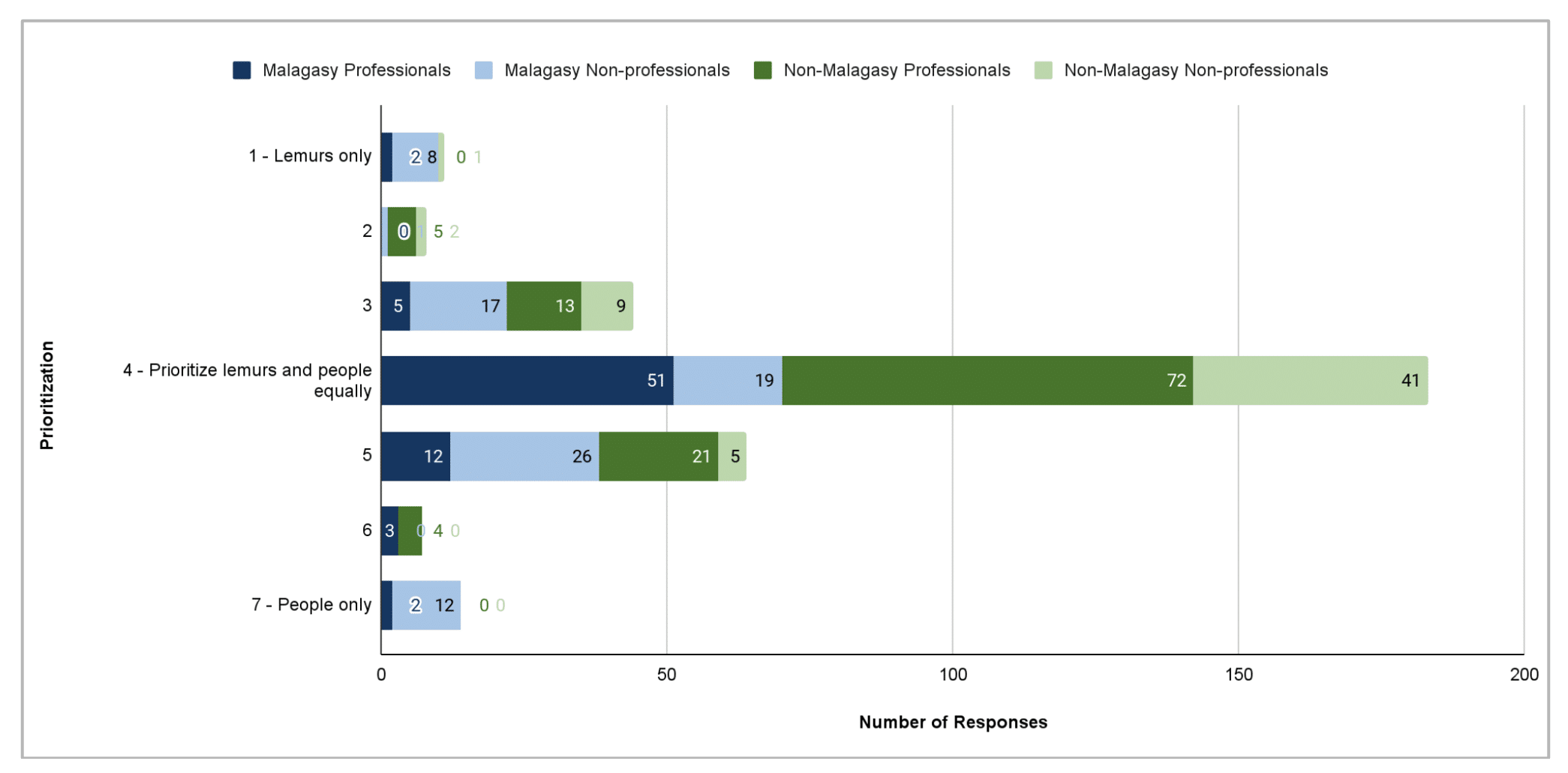
Conservation Threats
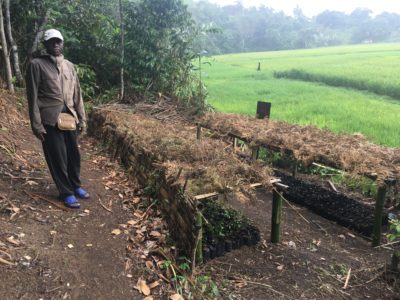
When exploring conservation threats, the top three selected among all respondents were logging (63%), farming/agriculture (53%) and hunting (52%).
An interesting result comes from charcoal production as a threat. This was the 3rd most selected threat among Malagasy professionals, compared with Malagasy non-professionals and non-Malagasy professionals. Why do only Malagasy conservation professionals see this as a threat of real concern?
Conservation Actions
For possible conservation action, the most selected for all was education for Malagasy people (52%), reforestation (50%) and sustainable farming techniques (48%). However, this is where disagreement began to show.
When comparing Malagasy and Non-Malagasy professionals, Malagasy professionals selected solutions like eco-tourism and fire control significantly more than non-Malagasy professionals. This is noteworthy, as fire for slash-and-burn agriculture is cited highly as a driver for deforestation across Madagascar (Rakotomanana et al. 2013). Again, why are Malagasy conservation professionals the only ones to prioritize these as solutions?
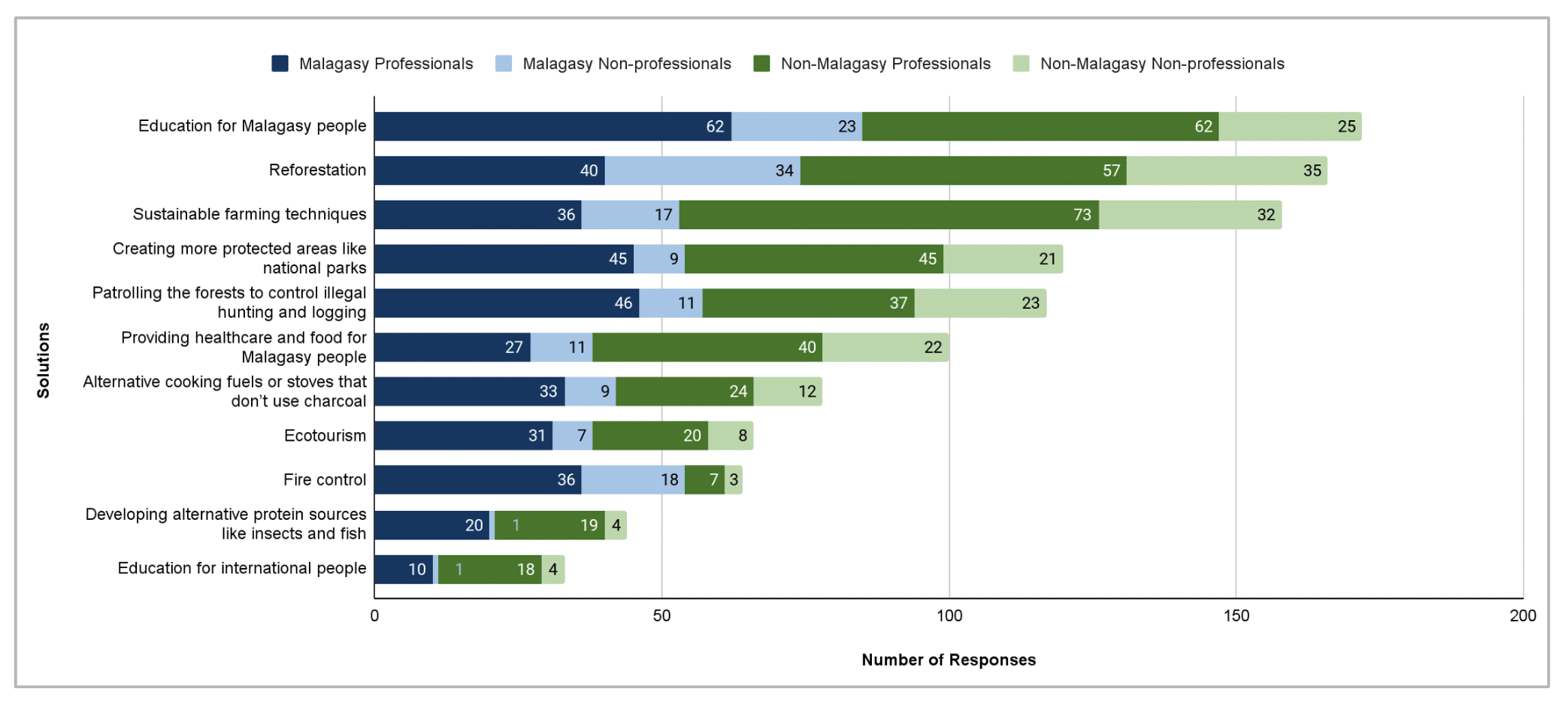
Education Topics
Education initiatives are an important component of conservation action. The topic of interest for all audience groups was how threats facing lemurs were being addressed. However, non-Malagasy non-professionals were significantly more interested in this than Malagasy non-professionals.
How do we move forward to address these differences?
Lynne Venart, co-author of this paper and Director of the Lemur Conservation Network, states:
One of the Lemur Conservation Network’s primary goals is to help people learn about lemurs in ways that are interesting and useful for them. It’s helpful to know what each of these four audience groups are most interested in! We will use this information to focus our outreach.
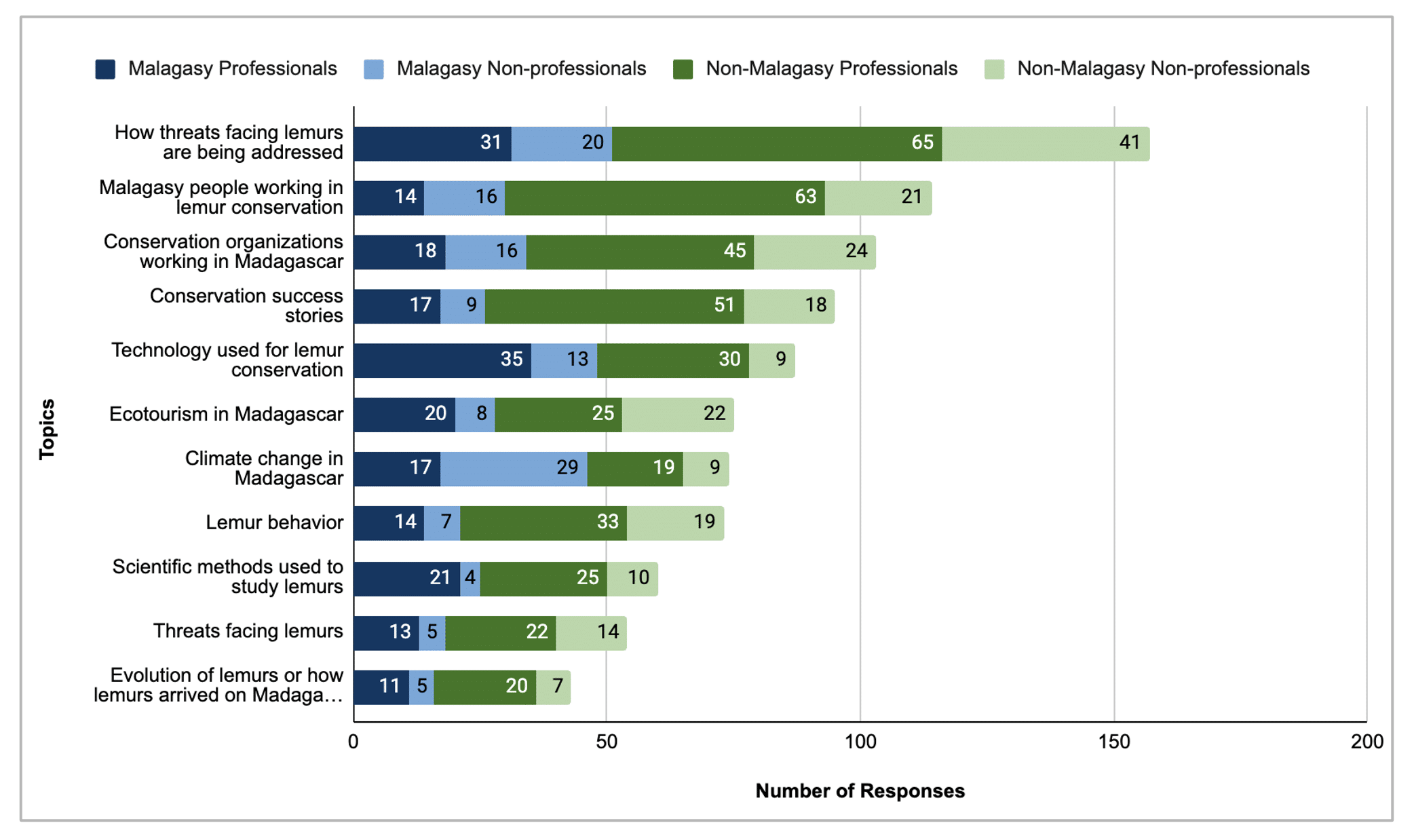
Why is this Research Important?
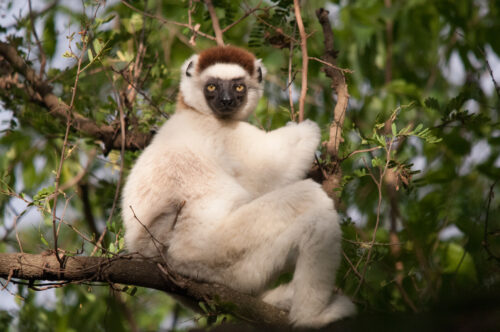
This study, despite its overall smaller sample size, clearly highlights how only some have the same perspective and viewpoint concerning priorities and solutions.
Malagasy and non-Malagasy agree on a large majority, including people/lemur prioritisation and conservation solutions. However, on some aspects, such as conservation threats, they differ. As the authors state themselves, this is just a stepping stone, and more research is needed to understand the true impact of these diverse views on lemur conservation programmes.
Ultimately though, studies like this that gain insights into perspectives of lemur conservation, and conservation as a whole are immensely important. They allow conservation professionals to see how the priorities and suggested solutions of their stakeholders vary. Hopefully, this results in better targeted and successful conservation action which satisfies and benefits everyone involved.
“We hope our research will encourage further conversations about effective collaboration between Malagasy and Non-Malagasy conservation professionals, [and] help build understanding and consensus among them…”
Research Summary
In review, perceptions of conservation threats and future actions don’t always align between all stakeholders. To have successful targeted conservation action, conservationists need to know exactly where perceptions align and where they don’t.
This study found that Malagasy and non-Malagasy viewpoints align on prioritisation, agreeing that people and lemurs should be prioritised equally. But, when asked about conservation threats, Malagasy professionals viewed charcoal production as a more significant threat than other audience groups. Similarly, when asked about solutions, Malagasy professionals ranked solutions like eco-tourism and fire control significantly higher than non-Malagasy professionals. More research is needed to better understand these perceptions of lemur conservation on a larger scale.
Personal Highlight
Often within the conservation science community, we see studies conducted and articles published that discuss the perspectives and views of a specific country or region, but only one or even none of the authors are from said country or region. The authors of this specific paper are both Malagasy and non-Malagasy conservation professionals. This is something that I love to see, and I feel it adds great value to the study!
Sources Used
- Scales, I. R. (2014). The drivers of deforestation and the complexity of land use in Madagascar. In Conservation and environmental management in Madagascar (pp. 105-126). Routledge.
- Rakotomanana, H., Jenkins, R. K., & Ratsimbazafy, J. (2013). Conservation challenges for Madagascar in the next decade. Conservation biology: voices from the Tropics, 33-39.
- Venart, L., Andriantsaralaza, S., Rasolozaka, M., Rabevao, E., & Rasoanaivo, H. A. (2023). Perceptions of Lemur Conservation among Malagasy and Non-Malagasy. Primate Conservation, (37).

